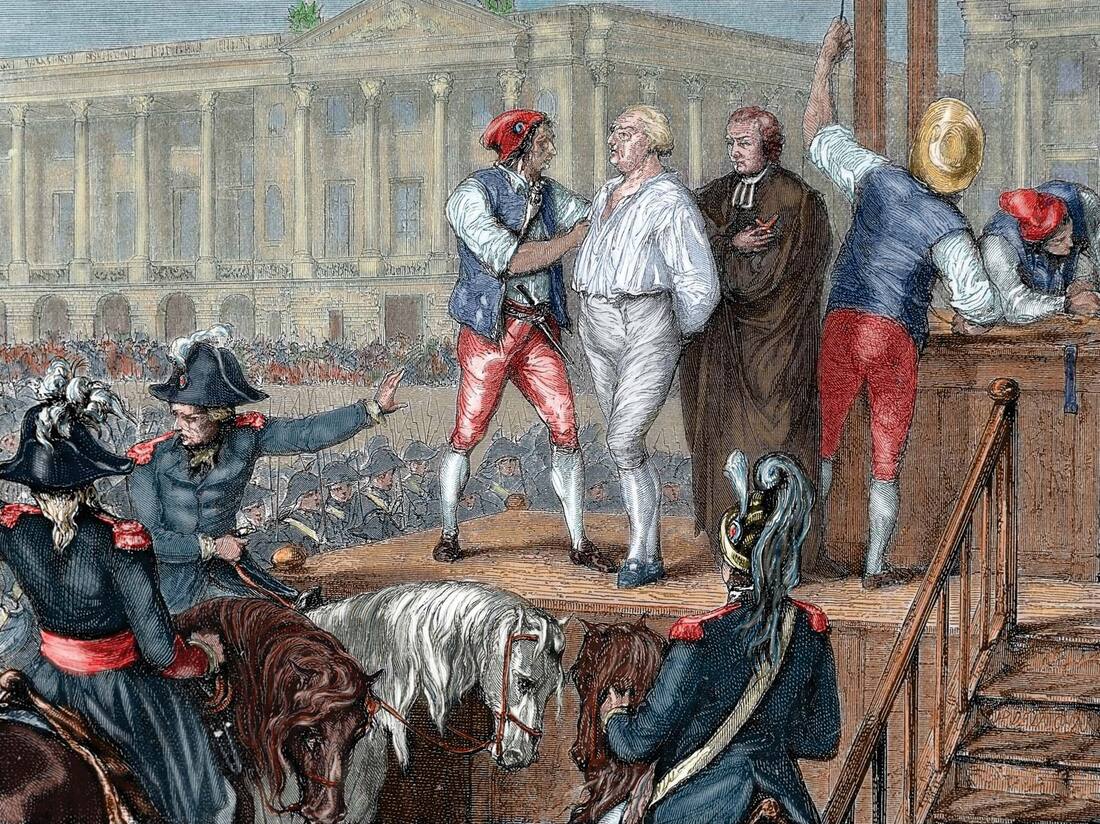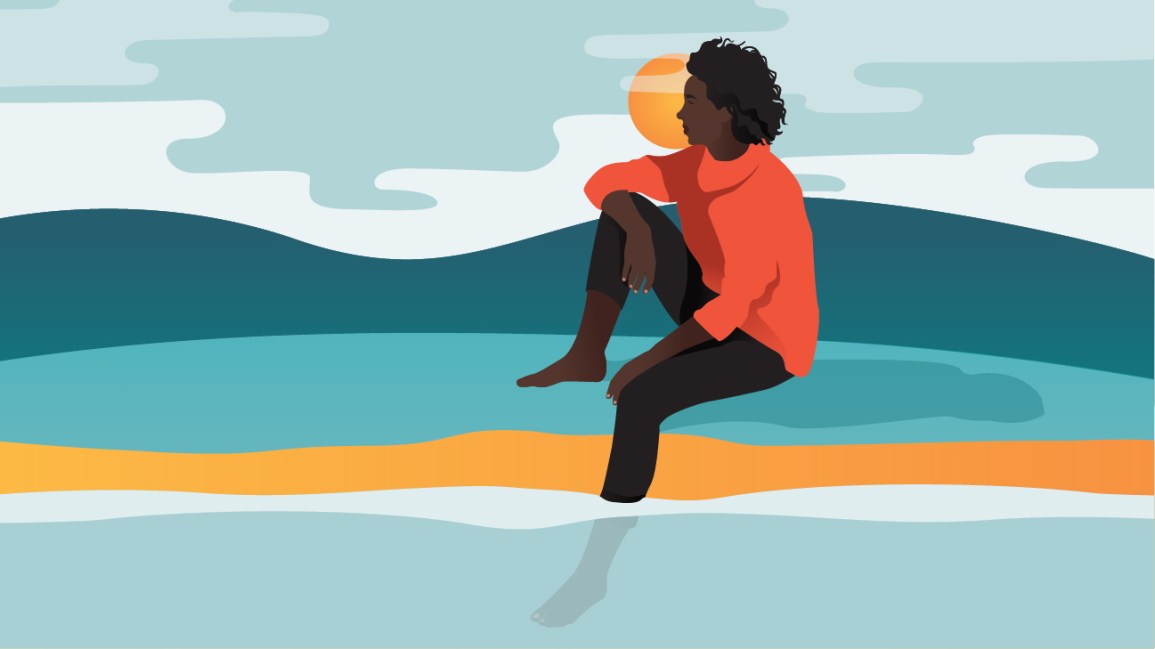Unit 4 has been divided into four weeks or modules. In each module, you will find the week’s objectives, to-do lists, and assignments. Modules have been further divided into days of the week with different tasks. Items, such as readings, videos, and quizzes must be completed in sequential order before you can move on to the next task.
To simplify things, most of the resources needed will be included in each module, including readings and videos. A PDF version of the textbook will be provided. Also, all assignments will be typed or copied into Canvas unless told otherwise.
Each week will follow a similar format. We will begin the week by analyzing several types of stimulus, such as images, charts, tables, videos, excerpts, quotes, etc. As you progress through the week, you will complete video and written assignments. There may also be assessments, like quizzes or tests, for you to complete as well. And finally, the last day of each week will be used to close and reflect on the learnings of the week. Here, you will complete a class discussion of the week’s guiding questions and topics. For each discussion, please read the question thoroughly and then response with a thoughtful response. You are also expected to respond to at least one of your classmate’s original posted answer and respond to at least one reply on your original posted answer.
We will also have daily zoom meetings according to this year’s bell schedule. Please arrive on time and prepared. Review over the week’s to-do list before asking questions. If you are unable to attend, recordings of the zoom meetings will be posted every morning after 8:20 am in the announcements section and under each week. Tutorials will be held on Tuesdays and Thursdays from 3:00 – 4:15 PM on zoom by appointment only.
For additional questions or concepts, please use the student lounge located under the Discussions tab or send me a private message using the Canvas Inbox. I would reply as quickly as possible.
Week 1: French Revolution Begins (2/1/21 – 2/5/21)
- Monday, February 2, 2021: Causes of the French Revolution
- Review the Module Objectives and Week 1 To-Do List, and then move on to Task 1.
- This will help you understand this week’s learning objectives and agenda.
- Task 1: Bellringer
- View the “Life in France Before the Revolution” bellringer.
- Complete the following short answer questions using complete sentences. 1. Describe the images of the King Louis XVI and the images of the French peasants. Use complete sentences. 2. Compare the life of the monarchy with the life of the peasants. What differences do you see?
- The Bellringer: Life in France Before the Revolution provides an activity that helps students engage with the lesson’s content and activate prior knowledge.
- View the “Life in France Before the Revolution” bellringer.
- Task 2: Chapter 22 Lesson 1 Guided Notes
- Download the guided notes. Students will use the attached reading or the McGraw Hill textbook (PDF) to complete the flow chart.
- Task 3: French Revolution Video
- Use “The French Revolution” video.
- Complete the following short answer questions using complete sentences. 1. What was significant about July 14, 1789? 2. What happened to Louis XVI during the revolution? 3. What three words summed up the New France? What three freedoms did “The Rights of Man” include? 4. When was France declared a republic and what impact did this have on Louis XVI?
- The video will introduce the causes and beginnings of the French Revolution.
- Use “The French Revolution” video.
- Task 4: Causes of the French Revolution
- Use “The Three Estates” interactive political cartoon.
- Students will view the political cartoon. 1. How does this visual material show bias?
- Students will identify bias in visual materials by analyzing a French political cartoon depicting the Three Estates: the nobility, the clergy, and the commoners in France, the Third Estate.
- Use the “Enlightenment Ideas and the Revolution” lecture slide.
- Display the slide and review the material. 1. What was the Enlightenment’s impact on the French Revolution?
- Enlightenment Ideas and the Revolution provides a display that helps students remain focused on your lesson’s main ideas and helps students develop note-taking skills.
- Use “The Three Estates” interactive political cartoon.
- Review the Module Objectives and Week 1 To-Do List, and then move on to Task 1.
- Tuesday, February 2, 2021: The National Assembly
- Review To-Do list and make sure Monday’s tasks are complete.
- Task 1: Bellringer
- Use “The Tennis Court Oath” and “The Siege of the Bastille” interactive images.
- After students study the interactive image of The Tennis Court Oath. Have students list the reasons for and the tactics used by the Third Estate. Then, list the king’s reactions.
- Have students study the interactive image of The Siege of the Bastille. 1. Who is outside the Bastille and what they want? 2. What is the symbolism of the Bastille as the first event in the French Revolution? 3. List three or four questions you have about the Bastille.
- Use “The Tennis Court Oath” and “The Siege of the Bastille” interactive images.
- Task 2: Causes of the French Revolution Video
- Students will watch “Causes of the French Revolution” and complete the guided questions.
- Wednesday, February 3, 2021: Causes of the French Revolution Flow Chart
- Review To-Do list and make sure Tuesday’s tasks are complete.
- Task 1: Causes of the French Revolution Flow Chart
- Download the French Revolution Flow Chart. Students will use the attached reading or the McGraw Hill textbook (PDF) to complete the flow chart.
- Thursday, February 4, 2021: End of the Old Regime
- Review To-Do list and make sure Wednesday’s tasks are complete.
- Task 1: Bellringer
- Use the “Declaration of the Rights of Man and of the Citizen and the Bill of Rights” primary source.
- 1. What are the political and legal ideas contained in the Declaration of the Rights of Man and of the Citizen?
- Primary source comparing excerpts from Declaration of the Rights of Man and of the Citizen and the Bill of Rights.
- Use the “Comparing Revolutionary Documents” chart.
- 1. Which entries in the Declaration of the Rights of Man and of the Citizen column were influenced by the Enlightenment? 2. What Enlightenment ideas might be added to the chart?
- Chart comparing the revolutionary documents: the English Bill of Rights, the American Declaration of Independence, the U.S. Constitution, and the Declaration of the Rights of Man and the Citizen.
- Use the “Declaration of the Rights of Man and of the Citizen and the Bill of Rights” primary source.
- Task 2: Declaration of the Rights of Man
- The Primary and Secondary Sources Worksheet helps students develop and practice thinking like a historian skills and to develop and practice critical thinking skills as they read about and answer questions about The Declaration of the Rights of Man and the Citizen.
- Students will practice analyzing and interpreting primary documents.
- Friday, February 5, 2021: Close and Reflect
- Review To-Do list and make sure Thursday’s tasks are complete.
- To close the lesson, emphasize that although France underwent a revolution, the phrase “old habits die hard” may apply.
- 1. Do you think France will have another king later in its history, after the Revolution? Why or why not?
Week 2: Radical Revolution and Reaction (2/8/2021 – 2/12/2021)
- Monday, February 8, 2021: The Moves to Radicalism
- Review the Module Objectives and Week 2 To-Do List, and then move on to Task 1.
- This will help you understand this week’s learning objectives and agenda.
- Task 1: Bellringer:
- Use the “Reviewing the Causes of the Revolution” bellringer.
- Have students respond to the discussion prompt. 1. Which of the causes were underlying and which of the causes were immediate? 2. Which of the causes of the revolution do you think will be solved by the end of the revolution?
- Reviewing the Causes of the Revolution provides an activity that helps students engage with the lesson’s content and activate prior knowledge.
- Use the “Reviewing the Causes of the Revolution” bellringer.
- Task 2: Chapter 22 Lesson 2 Guided Notes
- Download the guided notes. Students will use the attached reading or the McGraw Hill textbook (PDF) to complete the flow chart.
- Task 3: Radicalization of the French Revolution
- Use the “Government Bodies of France” table.
- What was the relationship between the Council of 500 and the Council of Elders?
- Governmental Groups provides an activity that helps students actively engage with your lesson’s Students Will Know objectives.
- Use the “Political Groups of the French Revolution” chart.
- 1. What generalization can you make from the lengths of time the Jacobins and Montagnards were in power? 2. What do the groups have in common? Where do they differ?
- Chart summarizing the basic philosophies of different groups during the French Revolution.
- Use the “Radicalization of the French Revolution” lecture slide.
- Discuss the effect of the execution of Louis XVI on France and on the rest of the world. How might the outcome have been different if the king had not been executed?
- Radicalization of the French Revolution provides a display that helps students remain focused on your lesson’s main ideas and helps students develop note-taking skills.
- Use “The Execution of King Louis XVI” image.
- 1. Why might the method of the king’s execution be significant?
- Interactive image of a print by Faucher-Gudin depicts Louis XVI’s execution on January 21, 1793.
- Use the “Georges Danton” biography.
- Display the “Georges Danton” biography. Explain the term moderate, “not favoring extreme political or social ideas, position, or actions.” 1. Have students list Danton’s radical views and his conservative views. 2. Why might Danton’s moderate views have led to his execution?
- Biography of Georges Danton and his role in the French Revolution and the Committee of Public Safety.
- Use the “Government Bodies of France” table.
- Review the Module Objectives and Week 2 To-Do List, and then move on to Task 1.
- Tuesday, February 9, 2021: The Reign of Terror
- Review To-Do list and make sure Monday’s tasks are complete.
- Task 1: Bellringer
- Use “Radical Revolution” bellringer.
- 1. Why might the guillotine have come to symbolize the French Revolution?
- Radical Revolution provides an activity that helps students engage with the lesson’s content and activate prior knowledge.
- Use “Radical Revolution” bellringer.
- Task 2: The Reign of Terror
- Use the “Reign of Terror” lecture slide.
- 1. Why did the French government use force against its own people?
- Use the “Maximilien Robespierre” biography.
- 1. Have students list Robespierre’s republican ideals and his political. 2. Do you agree that Robespierre was incorruptible? Why or why not?
- Biography of Maximilien Robespierre and his contributions to the Reign of Terror.
- Use “Marie Antoinette” video.
- Have students watch the video and take notes as they watch. Have students write brief summaries about Marie Antoinette.
- The execution of Marie Antoinette.
- Use the “Marie Antoinette” biography.
- 1. How did the queen’s image contribute to the revolution? 2. What evidence would you use to convince a jury that Marie Antoinette was not guilty of breaking the budget of France?
- Use the “Jean-Paul Marat” biography.
- 1. Charlotte Corday was an educated young woman whose political views were moderate. Why would she oppose Marat’s ideas? 2. Marat was a high-profile political voice whose newspaper had a lot of influence. What would be a probable outcome of his attacks on the moderates?
- Use the time line sequencing the events of the Reign of Terror to answer the questions that follow.
- What caused the Reign of Terror? Did it have the intended effect?
- Was the consequence of the Reign of Terror what you predicted? Explain.
- Use the “Reign of Terror” lecture slide.
- Wednesday, February 10, 2021: Reign of Terror Ends
- Review To-Do list and make sure Tuesday’s tasks are complete.
- Task 1: The End of Terror
- Use “The End of Terror” chart.
- 1. Why Robespierre may have been executed without a trial. 2. Why Robespierre’s death might have put an immediate end to the Reign of Terror? Use the “The Execution of Robespierre” image.
- Flow chart depicting the events leading to the end of the Reign of Terror.
- Use “The Execution of Robespierre” interactive image.
- 1. In what ways did the Reign of Terror contradict Enlightenment ideas?
- Interactive image of the execution of Robespierre on July 28, 1791 by guillotine.
- Use “The End of Terror” chart.
- Task 2: Revolutionary France: A Bankrupt Country
- Download Revolutionary France: A Bankrupt Country. Students will use the attached reading or the McGraw Hill textbook (PDF) to complete the flow chart.
- Thursday, February 11, 2021: The Directory
- Review To-Do list and make sure Wednesday’s tasks are complete.
- Task 1: The Directory
- Use “The Directory” lecture slide.
- 1. Did the transition from the Committee of Public Safety to the Directory help respond to the French people’s needs?
- Task 2: French Revolution Timeline
- Students will use the McGraw Hill textbook (PDF) or internet research to complete the timeline.
- Friday, February 12, 2021: Close and Reflect
- To close the lesson, emphasize that French society underwent numerous changes during this period in history.
- Discuss the guiding question “How did the constant transition within the French government influence its effectiveness?” In particular, have students reflect on economic challenges with which the French government wrestled.
- To close the lesson, emphasize that French society underwent numerous changes during this period in history.
Week 3: Rise and Fall of Napoleon (2/15/2021 – 2/19/2021)
- Monday, February 15, 2021: The Rise of Napoleon
- Review the Module Objectives and Week 3 To-Do List, and then move on to Task 1.
- This will help you understand this week’s learning objectives and agenda.
- Task 1: Bellringer
- Use the “Napoleon’s Leadership Skills” bellringer.
- To help students engage with the material about Napoleon, show the “Napoleon’s Leadership Skills” bellringer activity and have students discuss their responses to the questions. 1. Why do you think Napoleon showed interest in even his youngest soldiers? 2. Consider the excerpts you’ve read about Napoleon’s interactions with his troops. Do you think a good leader is someone who is fair and just, someone who accomplishes goals, or both? 3. What are the characteristics of a good leader?
- Use the “Napoleon’s Leadership Skills” bellringer.
- Task 2: Napoleon Video
- Use the “Napoleon” video.
- Have students watch the video on Napoleon. 1. When did Napoleon Bonaparte attain the title of emperor? 2. Why is Napoleon viewed as a master of mythmaking? 3. How did Napoleon use art to bend public opinion? 4. How does the video explain that Napoleon compared himself to Greek and Roman Gods?
- The video worksheet helps students engage with the video and record the main ideas covered in the video.
- When the video is finished, have students discuss the assertion that states that Napoleon was “the creator of his own legend.” Ask students whether they agree or disagree with this statement and why.
- Use the “Napoleon” video.
- Task 3: Chapter 22 Lesson 3 Guided Notes.
- Download the guided notes. Students will use the attached reading or the McGraw Hill textbook (PDF) to complete the flow chart.
- Review the Module Objectives and Week 3 To-Do List, and then move on to Task 1.
- Tuesday, February 16, 2021: Napoleon’s Empire
- Review To-Do list and make sure Monday’s tasks are complete.
- Task 1: “Napoleon’s Major Victories” bellringer
- Use the “Napoleon’s Major Victories, 1805–1806” bellringer.
- This activity will help students to describe the events associated with three of Napoleon’s major victories in Europe.
- Task 2: The Rise of Napoleon and the Napoleonic Wars
- Use “The Coronation of the Emperor Napoleon” interactive image.
- Have students view the image of The Coronation of the Emperor Napoleon. 1. How does David portray Napoleon in this painting? What does the painter’s depiction of Napoleon’s coronation reveal about Napoleon himself?
- Use “Concordat of 1801” primary source excerpt.
- Have students view the excerpt of Concordat of 1801. 1. Based on the Concordat selections you read, how would you describe the new relationship between the French government and the Catholic Church? 2. Why might Napoleon have wanted the relationship redefined in this way?
- Use “French Civil Code” interactive image.
- Have students view the image of the French Civil Code. 1. How did the Napoleonic Code affect the people of France?
- Use “Napoleon’s Civil Law Code and Louisiana Civil Law” chart
- Have students view the chart of Napoleon’s Civil Law Code and Louisiana Civil Law. 1. Why might Louisiana Civil Law bear such close resemblance to the Napoleonic Code, despite the fact that the United States purchased the territory? 2. Which appears to be more specific, the Napoleonic Code or Louisiana Civil Law? Why? Give an example to support your answer.
- Use “The Coronation of the Emperor Napoleon” interactive image.
- Wednesday, February 17, 2021: The Fall of Napoleon
- Review To-Do list and make sure Tuesday’s tasks are complete.
- Task 1: Napoleon and European Nationalism
- Use the “Napoleon and European Nationalism” bellringer.
- To help students engage with the material on Napoleon’s fall from power, show the “Napoleon and European Nationalism”. 1. What fault is there in Napoleon’s vision? 2. How did nationalism influence political revolution?
- Use the “Napoleon and European Nationalism” bellringer.
- Task 2: The Fall of Napoleon and the European Reaction
- Use the “Napoleon’s Retreat from Russia” primary source.
- Have students read the primary source describing Napoleon’s retreat from Russia. 1. What does the excerpt tell you about Napoleon’s army? 2. Do you think they turned against Napoleon as a result of the Russian disaster? Explain.
- Use “The Retreat from Russia” image.
- Have students view the image of The Retreat from Russia. 1. Study the image. How might the artist’s portrayal of the retreat from Russia be misleading?
- Use the “Napoleon in Exile” video.
- Have students watch the video and take notes as they watch. 1. Where was Napoleon exiled after his defeat in 1914? 2. What changes did Napoleon make on the Italian island during his exile? 3. Why did Napoleon leave the Italian island?
- Use the “Napoleon’s Final Days” slide show.
- Have students view the slideshow showing Napoleons’ final days. 1 Why do you think Napoleon was able to regain control of France after his escape from Elba? 2. What generalizations can you make from the images of Napoleon in these portrayals?
- Slide show depicting Napoleon’s downfall. In just 20 months, Napoleon lost control of his empire, was exiled to Elba, escaped from Elba, returned to Paris and regained control of France, led several battles, was defeated at Waterloo, and was exiled for a second time.
- Use the “Napoleon’s Retreat from Russia” primary source.
- Thursday, February 18, 2021: European Reaction
- Review To-Do list and make sure Wednesday’s tasks are complete.
- Task 1: Congress of Vienna
- Use “The Congress of Vienna” interactive image.
- Have students study the image and click on the captions and read them aloud. 1. What was the impact of Napoleon and the Napoleonic Wars on Europe? 2. Categorize the countries allied against France. What do these countries have in common? 3. What is the significance of the globe and the map on the table?
- Use the “Europe After the Congress of Vienna, 1815” interactive map.
- Have students view the map. 1. What was the idea behind the “balance of power” concept in European diplomacy? 2. Does the map suggest that the great powers achieved their goal? 3. In contrast to a balance of power, what might happen if one nation had most of the power? 4. What are the arguments in favor of and against the principle of intervention?
- Use “The Congress of Vienna” interactive image.
- Friday, February 19, 2021: Close and Reflect
- Review To-Do list and make sure Thursday’s tasks are complete.
- Task 1: Comparing the American and French Revolutions
- Create a Venn diagram to compare and contrast the causes and effects of the American and French Revolutions, including the Enlightenment, the Glorious Revolution, the role of religion, other characteristics, and the consequences.
- Close and Reflect: Week 3
- To close the lesson, have students review the details surrounding Napoleon’s fall from power. Have students respond to the discussion prompt. 1. Which of the causes were underlying and which of the causes were immediate? Was the French Revolution worth it? Is Napoleon an effective leader or not?
Week 4: Wrap Up (2/22/2021 – 2/26/2021)
- Monday, February 22, 2021: French Revolution Project
- Review the Module Objectives and Week 4 To-Do List, and then move on to Task 1.
- This will help you understand this week’s learning objectives and agenda.
- Project: French Revolution Newspaper. What Makes a Revolution? Students will research the French Revolution and work in groups to create a newspaper that identifies major events and historical figures.
- Step 1: Student groups will use the Student Edition lessons and library or online research to identify and understand the causes of the French Revolution. Over the course of this project they will answer the Essential Questions for this chapter:
- Step 2: Students will research events of the French Revolution and prepare articles and images for inclusion in a newspaper. In Step 3 they will put the components together.
- Have the class choose a title for the publication. Then display this list of topics they want to research:
- Storming of the Bastille
- March on Versailles
- Meeting of the Estates General
- National Convention’s 1793 repeal of Sumptuary laws
- The financial crisis
- The fall of the monarchy
- Editorials in favor of and opposed to Robespierre and the Committee of Public Safety
- Reign of Terror
- Coronation of Napoleon
- Continental System
- War with Austria
- The Directory
- Reorganization of the Catholic Church
- Deaths of Jean-Paul Marat and Olympe de Gouges
- Before students begin their research, remind them of the basic questions of journalism to be covered in their stories: Who? What? Where? When? Why? Also remind them to keep track of their sources, and that their findings should be documented.
- Step 3: Putting it Together Students will use the research they conducted in Step 2 to write the articles and arrange them in a hard-copy or online newspaper.
- Day 1: Select article topic and references
- Review the Module Objectives and Week 4 To-Do List, and then move on to Task 1.
- Tuesday, February 23, 2021: French Revolution Project
- Day 2: Complete Planning Your Newspaper assignment
- Wednesday, February 24, 2021: French Revolution Project
- Day 3: Submit final newspaper article.
- Thursday, February 25, 2021: Unit 4 Review
- Quizlet
- Unit 4 Review Sheet assignment
- Friday, February 26, 2021: Unit 4 CCA
- Unit 4 Exam
- Major Grade
- 15 Multiple Choice Questions
- 5 Short Answers
- 50 Minutes
- 2 Attempts, Latest Score
- Unit 4 Exam
References
Britannica, T. Editors of Encyclopaedia (2020, September 10). French Revolution. Encyclopedia Britannica. https://www.britannica.com/event/French-Revolution
Spielvogel, J. J. (2016). World History. Columbusm, OH: McGraw-Hill Education.
share this:




Be the first to reply